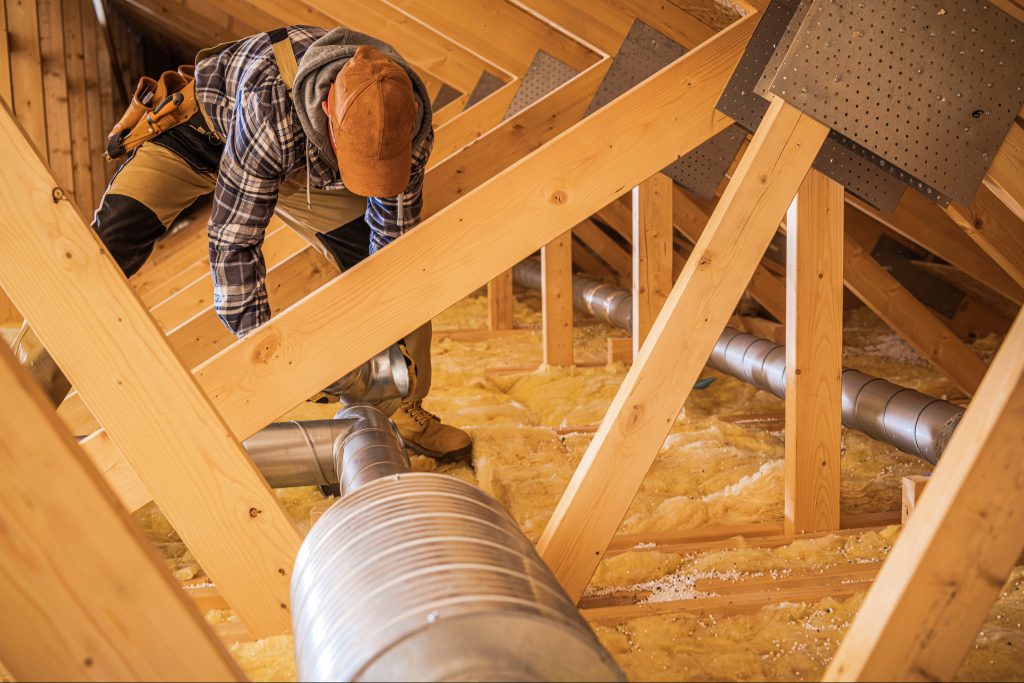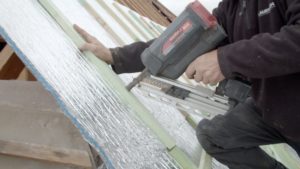Attic Insulation Requirements for New Builds

Insulating an attic correctly is one of the most important steps in ensuring a new building meets energy efficiency standards. Whether it’s a commercial facility, an industrial warehouse, or a multi-unit residential project, meeting attic insulation requirements is critical for optimizing HVAC performance, reducing long-term energy costs, and maintaining a comfortable indoor environment.
With evolving building codes and sustainability initiatives, it’s important to choose the right insulation materials while ensuring compliance with local and national regulations. Let Quattro walk you through attic insulation requirements, the best materials for new builds, and factors to consider when planning an efficient insulation system.
The Basics of Attic Insulation
Attic insulation is primarily governed by R-value requirements, which measure how effectively a material resists heat transfer. The higher the R-value, the better the insulation’s ability to prevent heat loss in winter and heat gain in summer.
Building codes set attic insulation requirements based on climate zones, which determine the level of insulation needed for optimal energy efficiency. The International Energy Conservation Code (IECC) provides recommended R-values for different regions:
- Warmer Climates (Zones 1-3): R-30 to R-49
- Moderate Climates (Zones 4-5): R-38 to R-60
- Colder Climates (Zones 6-8): R-49 to R-60
In commercial and industrial settings, insulation requirements may also be dictated by ASHRAE (American Society of Heating, Refrigerating and Air-Conditioning Engineers) standards, which outline best practices for energy-efficient building design.
Choosing Attic Insulation for New Builds
Before selecting insulation materials, builders must evaluate several factors to ensure long-term efficiency and compliance with attic insulation requirements.
Building Code Compliance
You will need to confirm that insulation R-values meet or exceed IECC and ASHRAE guidelines for the project’s location. Then, you can ensure proper vapor barriers are included if required for moisture control.
Energy Efficiency Goals
Insulation should help meet energy efficiency targets, such as LEED certification or net-zero building objectives. Selecting high-performance insulation reduces HVAC loads, lowering operational costs.
Moisture and Condensation Control
Attic insulation must prevent condensation buildup, which can lead to mold growth and structural damage. This is why reflective vapor barrier insulation is often recommended for high-humidity areas.
Installation Ease and Cost
Usually, new builds benefit from insulation that is quick and cost-effective to install. Lightweight insulation solutions reduce labor costs and project timelines for these projects.
Best Insulation Types for Meeting Attic Insulation Requirements
Not all insulation materials perform equally when it comes to meeting attic insulation requirements in new builds. These options provide superior thermal resistance, moisture control, and long-term durability.
Reflective Vapor Barrier Insulation
Reflective insulation, such as Quattro’s reflective vapor barrier, is an excellent choice for attics in commercial and industrial buildings. It works by reflecting radiant heat away from the structure while preventing moisture infiltration.
Best For: Warm climates, high-humidity environments, and buildings with strict energy efficiency goals.
Blown-In Fiberglass or Cellulose Insulation
Blown-in insulation is commonly used in attics because it provides uniform coverage and fills gaps effectively. It is typically installed using specialized equipment to ensure even distribution.
Best For: Residential and commercial attics requiring high R-values.
Spray Foam Insulation (Closed-Cell)
Spray foam insulation expands upon application, creating an airtight seal that enhances energy efficiency. It is particularly useful for sealing air leaks in attic spaces.
Best For: Attics in cold climates where air sealing is a priority.
Rigid Foam Board Insulation
Rigid foam boards, such as extruded polystyrene (XPS) and polyisocyanurate, are excellent choices for new builds where space efficiency is important. These boards provide continuous insulation and prevent thermal bridging.
Best For: Modern energy-efficient buildings and LEED-certified projects.
Quattro’s Reflective Vapor Barrier Insulation for New Builds
New builds require insulation that meets attic insulation requirements while providing long-term energy efficiency and durability. Reflective vapor barrier insulation, blown-in fiberglass, spray foam, and rigid foam boards all offer effective solutions for different project needs. But Quattro’s reflective vapor barrier insulation is a standout choice for those seeking superior thermal performance, moisture protection, and ease of installation.
Learn more about how Quattro’s insulation solutions can help your new build meet and exceed modern attic insulation standards today!


